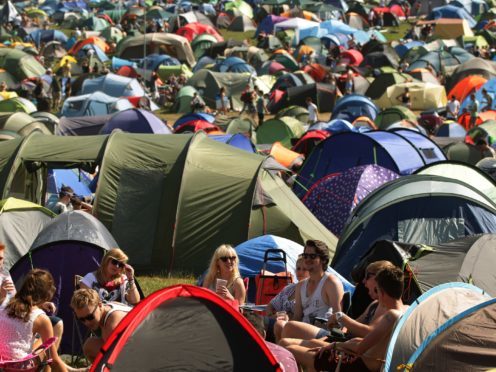As the summer festival season gets under way, nursing leaders have warned that music fans are putting themselves in serious danger of gas poisoning when camping.
The Royal College of Nursing (RCN) said festival-goers are at high risk of carbon monoxide poisoning if they do not use campfires, barbecues and gas stoves properly.
Exposure to the gas can cause seizures, loss of consciousness, long-term neurological damage such as memory impairment, and even death – but the symptoms of carbon monoxide poisoning are often just dismissed as a hangover.
Around 50 people die from carbon monoxide poisoning in the UK every year and around 4,000 are taken to A&E, though experts say these figures are likely to be an underestimate.
The RCN said many people are unaware that all fuels – whether gas, charcoal or wood – can give off harmful carbon monoxide fumes if they do not burn fully and they are at even greater risk if the source of the gas is in an enclosed space such as the entrance to a tent.
It is warning people attending festivals and other outdoor events this summer not to pull disposable barbecues into their tent to warm up if the weather is cold – even if the coals seem to be cool.
It also strongly advises against cooking on any fuel (gas, charcoal or wood) inside their tent – including the entrance to the tent, and to take care not to inhale fumes from generators or engines at events they attend.
Nichola Ashby, RCN professional lead for acute, emergency and critical care, said: “I go to a lot of festivals myself, not as a nurse but as a music fan – and I’m shocked at the lack of awareness of the risks people face from cooking fuels.
“Just two weeks ago I saw someone trying to cook bacon and eggs on a disposable barbecue just inside their tent – they didn’t realise the danger they were facing.
“Recognising carbon monoxide poisoning presents real challenges to nurses and other healthcare staff at the best of times. But it’s particularly difficult at festivals, because the symptoms people experience can easily be mistaken for a hangover by friends and healthcare staff.
“Our message is that if you just ‘don’t feel right’ and are near a barbecue, campfire or generator exhaust, move away, breathe in fresh air and seek clinical help, saying that you think you have been poisoned by carbon monoxide.
“Parents camping with families at music events need to realise that carbon monoxide can have a faster impact on young children than adults. And all healthcare staff and volunteers on duty at festivals need to be fully aware of the symptoms and dangers of carbon monoxide poisoning.
“We need much greater awareness that carbon monoxide isn’t just a danger in the home, but can also have a serious impact at outdoor events such as festivals – people are putting themselves in serious danger if they don’t use cooking fuels properly at festivals.”
